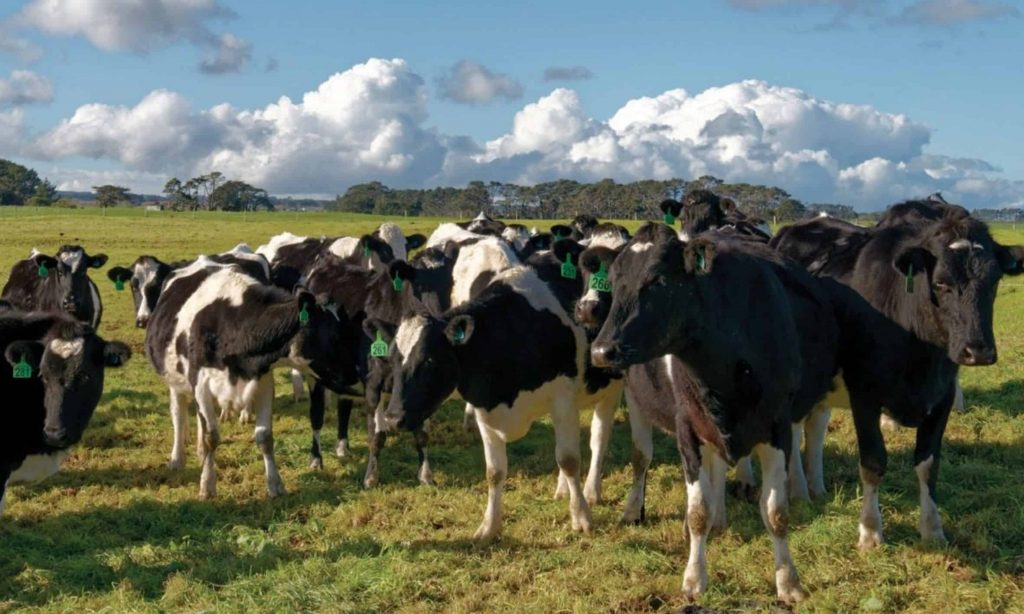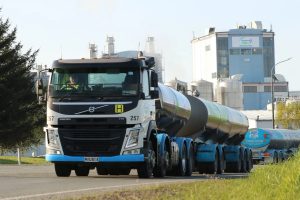
The volume of yearling sales has been trending up for the past few years, primarily to meet rising demand from dairy farmers looking for low-birthweight bulls for mating heifers.
But with increasing use of sexed semen in dairy herds to produce sufficient heifer replacements, there’s greater scope for more use of beef bulls across the remaining herd to produce beef-cross progeny which can be finished for export as high quality beef.

A new supplier rule introduced by the country’s largest milk processor-exporter is also expected to have an impact. Fonterra told its milk suppliers earlier this year to ensure all their calves have a ‘useful life’ and has banned onfarm euthanasia from June 1 this year, except for animal welfare reasons.
This is expected to influence bull choice away from traditional options such as Jerseys to beef breeds, so the dairy industry will become a larger source of dairy beef calves for rearing and finishing.
The technology supporting greater numbers of yearling bulls being offered for sale is genomics.
Zoetis Genetics beef specialist Amy Hoogenboom says genomics provides a good prediction of a bull’s likely future performance, even at yearling age.
Genomics is a numbers game and is only available for Angus and Hereford breeds, recorded with Breedplan, or for cattle recorded through the Leachman $ Profit multi-breed analysis which is used by a small number of NZ studs.
Genomic analysis helps shift a bull’s EBVs closer to its true breeding value before the bull has any progeny on the ground. When combined with all the other information available (pedigree, raw measurements recorded), genomically enhanced EBVs provide potential buyers with the best estimate of the bull’s genetic value as a sire.
“There is really only one measurement that breeders are unable to record for by yearling sale time each year which is 600 day weight, so this means there is minimal change between a bull’s EBVs, and accuracy between yearling and two-year-old age.”
Hoogenboom says yearling sales are becoming more popular with beef farmers because they are usually a source of cheaper genetics than two-year bull sales.
“Farmers are no worse off buying at yearling sales, provided the stud selling the bulls is recording all the traits accurately and doing the measurements when they should,” she says.
Northland Angus breeder Chris Biddles says the Fonterra move to ban on-farm euthanasia is likely to draw more beef studs into running yearling bull sales in the future.
He was one of the first to run a yearling bull sale, specialising in offering genetics for calving ease and heifer mating. He sells around 100 under the hammer in early September each year and says 40% of his clients are dairy farmers who buy 60% of the bulls offered.
The Absolom family in Hawke’s Bay will hold its 31st yearling bull sale this spring and has been embracing the use of genomics in its bull breeding strategy to deliver about 750 yearling bulls to the beef and dairy sectors.
Co-owner Daniel Absolom says genomics has created the biggest shift in performance recording since EBVs were introduced in the 1980s. EBVs enhanced by genomics has almost doubled the accuracy of the data previously available.
“In the past five years, genomic testing has become a massive part of what we do at Rissington. When coupled with Vytelle Feed Efficiency testing that we do here, genomics is certainly a game changer for us,” he says.
Rissington is in its third year of selling homozygous polled yearling sires to the dairy sector and this year expects to sell 500, already double the number sold to commercial beef farmers which took more than 50 years to build.
Rissington sources bulls for its dairy farmer customers from its beef bull clients who use the Zoetis Inherit Select DNA test to ensure they retain only the most profitable females. Another genomic tool, HD50K for $Profit, is then run on their bull calves to select the best for the dairy industry using a trademarked $Dairy Index developed with AbacusBio.























